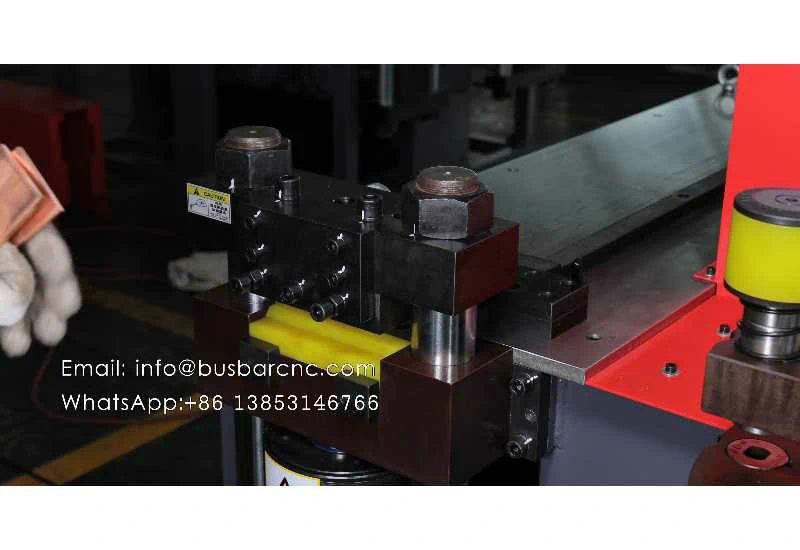Copper is a versatile and widely used metal in various industries due to its excellent conductivity and corrosion resistance. In the realm of electrical engineering, copper plays a crucial role in the fabrication of busbars, which are essential components for distributing electrical power within systems. The strength of copper is especially highlighted in the process of busbar fabrication, where punching machines are employed to create precise openings and shapes in the metal.
Punching machines are mechanical tools designed to punch holes, slots, and other features in sheet metal with high accuracy and speed. When it comes to busbar fabrication, the impact of punching machines is significant in ensuring the efficiency, quality, and consistency of the final product. This article delves into the various aspects of how punching machines contribute to the strength of copper in busbar fabrication.
Precision and Customization
Precision in Punching
One of the key advantages of using punching machines in busbar fabrication is the ability to achieve high precision in creating holes and cutouts. These machines are equipped with specialized tooling that can accurately position the copper sheet and apply the necessary force to create clean and precise openings. This level of precision is crucial in ensuring the proper fit and alignment of busbar components, ultimately contributing to the overall reliability of the electrical system.
Customization Options
In addition to precision, punching machines offer a high degree of customization options when it comes to creating intricate shapes and designs in busbars. By using computer-aided design (CAD) software in conjunction with punching machines, manufacturers can easily program the desired patterns and dimensions for the busbars. This flexibility allows for the production of custom busbars tailored to specific applications, whether in terms of size, shape, or configuration.
Efficiency and Productivity
Speed and Automation
Punching machines excel in their speed and automation capabilities, enabling manufacturers to produce busbars in large quantities with minimal manual intervention. The automated nature of these machines reduces the time required for each punching operation, leading to increased productivity and throughput in busbar fabrication processes. This efficiency not only saves time but also lowers production costs, making punching machines a cost-effective solution for mass production.
Consistency and busbar machine Quality Control
Furthermore, punching machines contribute to maintaining consistency and quality control in busbar fabrication. Unlike manual punching methods, which may result in variations in hole sizes and positions, punching machines deliver uniformity across all fabricated busbars. This consistency is crucial in ensuring the proper functioning of the electrical system and minimizing the risk of defects or failures due to irregularities in the busbar structure.
Material Strength and Durability
Impact on Copper Properties
The use of punching machines has a direct impact on the strength and durability of copper busbars. By employing precise punching techniques, manufacturers can preserve the inherent strength of copper while shaping it into the desired form. This preservation of material properties is essential in maintaining the electrical conductivity and mechanical integrity of the busbars, ensuring reliable performance under various operating conditions.
Stress Distribution and Load Bearing
Moreover, the punching process plays a role in optimizing the stress distribution and load-bearing capacity of copper busbars. Through careful design and punching techniques, manufacturers can create busbars with reinforced areas that can withstand higher currents and mechanical stresses. This strategic reinforcement enhances the overall durability and longevity of the busbars, making them suitable for demanding applications where reliability is paramount.
Environmental Impact and Sustainability
Material Efficiency and Waste Reduction
In the context of sustainability, the use of punching machines in busbar fabrication contributes to material efficiency and waste reduction. These machines are capable of maximizing the utilization of copper sheets by minimizing scrap and offcuts during the punching process. By optimizing the layout of punched features and nesting patterns, manufacturers can reduce material waste and improve the overall sustainability of their production operations.
Energy Efficiency and Resource Conservation
Furthermore, punching machines offer energy-efficient operation compared to alternative cutting methods, such as laser cutting or water jetting. The mechanical nature of punching minimizes energy consumption per punched feature, resulting in lower overall energy usage during busbar fabrication. This energy efficiency not only reduces operational costs but also aligns with sustainable practices aimed at conserving resources and reducing the carbon footprint of manufacturing processes.
Conclusion

In conclusion, the strength of copper in busbar fabrication is greatly enhanced by the impact of punching machines. These versatile tools enable manufacturers to achieve precision, customization, efficiency, and material strength in producing high-quality busbars for various electrical applications. By leveraging the capabilities of punching machines, manufacturers can optimize their production processes, enhance the performance of busbars, and contribute to a more sustainable and resilient electrical infrastructure. The combination of copper’s inherent properties and the technological advancements in punching machinery paves the way for continued innovation and excellence in busbar fabrication.





